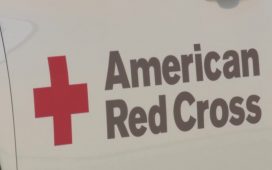Maintaining the transportation status quo in our cities is inequitable and untenable in every way — economically, environmentally and socially. That’s the blunt assessment of a new “mobility justice” report from the Anti-Police-Terror Project, an Oakland-based nonprofit.
Too many pedestrians and cyclists get hit and killed by drivers every year, the report says. And too many suffer the costs of primarily using cars for transportation, whether in the form of high fuel expenses, heavy pollution or lengthy commute times.
“Decarcerating Transportation” lays out a “roadmap for police-free transportation,” in APTP’s phrase. The group is known for its call to defund the Oakland Police Department, pushing the city to invest in noncarceral options like the Oakland MACRO response program. Its approach to transit is similar: APTP focuses on reimagining old systems by investing in public transportation and infrastructure instead of an enforcement regime that has long produced racist outcomes.
The report includes tips to decarcerate transportation for the benefit of Black, Indigenous and People of Color, or BIPOC. It recommends reducing or eliminating public transit fares, moving traffic enforcement from cops to volunteers or mental health experts, and growing transportation departments’ budgets to design car-slowing roads.
Cat Brooks, the executive director of APTP, says in the report that policing has been the “default option” for creating traffic safety across the country but has not led to safer outcomes. The report explores “the economic and racial inequalities deeply embedded in our current approach to mobility,” Brooks writes.
Carter Lavin, a local transportation advocate, told The Oaklandside that the report is an example of how Oakland “is at the cutting edge nationally on the mobility justice conversation.”
“People often don’t know how deeply entwined our carceral system is with our transportation system,” he said. “At marches for justice, we often chant ‘Whose streets? Our streets’ as a statement of how the power comes from the people, and I’m deeply appreciative APTP has made this to help show the world that the streets truly are ours, and if we treat them as such, our communities will be safer, more just, easier to get around.”
U.S. transportation systems have long been bound up with unjust policing and infrastructure development, from the building of highways on top of poor Black, brown and Asian communities to limiting the movement of bodies in certain parts of town. Academic research has found BIPOC are often stopped by police when driving, walking and cycling, often because of profiling, and suffer worse outcomes than their white peers, including higher rates of injuries, incarceration and death.
The report seeks to provide a framework for discussing transportation justice. Starting today, the organization hopes to distribute it to prominent Bay Area legislators, including the Oakland and San Francisco mayors, Gov. Gavin Newsom, city transportation departments, and transit and police enforcement agencies, including BART, AC Transit and Caltrans.
“Mobility justice aims to eliminate discrimination based on race, class, legal status, ability, gender, or age in how travel is regulated and accommodated,” the report states.
BIPOC people suffer more indignities while walking, biking, scooting and driving, but everyone suffers from inequitable transit policy
APTP’s report points out how BIPOC pedestrians, cyclists, scooters and drivers in particular, suffer compounding harm from transit inequities when authorities don’t center their needs in the development or rollout of infrastructure projects.
Oakland’s Department of Transportation has published policy research that has come to the same conclusion. Its 2017 Bike Plan and subsequent reports have found that reduced investment in East Oakland neighborhoods over the last few decades has led to more dangerous roads. This is why major East Oakland arterial roads like International Boulevard, Foothill Boulevard, Bancroft Avenue and High Street have recently received or are in the process of receiving major road upgrades for the first time in generations.
Oakland has also used transit justice models in recent years. Since the transportation department was created in 2016, the city has focused on improving transit racial disparities through its Geographic Equity Toolbox. This tool has helped city engineers prioritize new projects, including full street repaving and new crosswalks, in the historically disinvested East and West Oakland communities.
APTP notes in the report that sidewalks and proper street lighting, for example, are also typical in high-income neighborhood roads, while only half of low-income neighborhoods have them. This leads to more BIPOC people either walking on the roadway or going unseen at night, making them more vulnerable to speeding cars and injuries, APTP says. Similarly, most cities have car-slowing infrastructure such as traffic circles in affluent neighborhoods but not in poor ones. Then, when those communities are policed for forced behavior like walking on the street, their problems are further compounded. Residents, for example, get jaywalking tickets they can’t afford, negatively affecting their credit score and purchasing power.
The “arbitrary and ambiguous” policing of transit regulations has actually been one of the least understood and underreported aspects of transit inequities, the APTP says in the report. They note there are 15 different types of biking laws across the country that are inconsistently enforced. When they are enforced, they tend to be used mostly against BIPOC people and often in unjust ways. The report cites the story of 33-year-old Ronell Foster, a Vallejo resident chased by police for not having a headlamp on his bike. He was shot seven times, leading to his death. Vallejo paid his family a $5.7 million settlement.
Other examples of inequitable enforcement are the New York City Police Department issuing 87% of all biking tickets to Black or Latinx cyclists even though they constitute half of all cyclists. In Los Angeles, a Los Angeles Times investigation found out that in 40,000 bike stops over four years, deputies searched the bodies of cyclists 85% of the time, often after arresting and cuffing them.
Beyond the high personal cost of enforcement to certain individuals, the level of investment by authorities, especially transit agencies, is not worth it because it is “counterproductive, costly, and ineffective,” APTP finds.
“Imposing fines for fare evasion strains local courts and administrative entities, as many fines go unpaid,” the report states. “In 2018, BART issued 6,800 payment citations, with 90 percent of individuals failing to pay. Furthermore, the procedures in the Superior Court for handling citations are confusing and cumbersome for riders and agencies.”
Creating a fare-free program for Bay Area organizations like BART, AC Transit and Caltrans would reduce the strain on the courts, encourage environmentally friendly transit and reduce incarceration, the thinking goes. Already, many national and local transit advocacy organizations like Transform and Bike East Bay have advocated for a fare-free transit future.
James Burch, the APTP’s deputy director, told us that in the process of researching the report, he was surprised about how many “incredible and innovative ideas” there were around the country that could make roadways safer, including in Oakland. He said he wants to help bring more road infrastructure investment into East Oakland and the Coliseum area in particular because it will reduce traffic violence.
“If you go down to 73rd or Hegenberger you can see very quickly why there are so many deaths and serious injuries. These are stretches of road that have been neglected for decades and are in desperate need of both repair and modern traffic calming measures. Speed bumps, pedestrian crossing signs, protected bus stops, protected bike lanes, lighting, actual sidewalks with curbs, and more,” Burch said.








